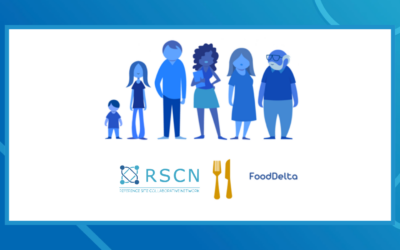In a recent webinar hosted by the RSCN Food & Nutrition Thematic Working Group, health professionals and experts from across Europe gathered to discuss “Innovative Approaches to Improve Food Intake: Examples of Good Practices.” The session, held on April 2, 2025, spotlighted successful strategies to enhance nutritional care in primary and hospital settings.
In a recent webinar hosted by the RSCN Food & Nutrition Thematic Working Group, health professionals and experts from across Europe gathered to discuss “Innovative Approaches to Improve Food Intake: Examples of Good Practices.” The session, held on April 2, 2025, spotlighted successful strategies to enhance nutritional care in primary and hospital settings.
Chaired by Prof. Maddalena Illario, the webinar focused on how nutritional care can be a cornerstone of health throughout life, from infancy through old age. She welcomed four key speakers: Pedro Morera Pérez, Fernando Torres Imaz, Bart Geurden, and Joost Wesseling, who shared insights from Andalusia, hospital care settings, the field of gastrology, and pan-European nutritional policy, respectively.
Personalized Nutrition: A Lifespan Approach
Pedro Morera Pérez emphasised “the need for age and condition specific nutrition plans rooted in the Mediterranean diet”. He showcased Andalusia’s regional strategies to combat childhood obesity, such as the “Integral Plan of Obesity for Children and Adolescents.” He introduced a digital tool enabling personalized nutrition assessments in primary care. Teleconsultation services, he explained, “now facilitate efficient communication between general practitioners and hospital-based specialists”.
Hospital Nutrition: Safe, Tasty, and Tailored
Fernando Torres Imaz focused on hospital nutrition, highlighting the crucial role of dietary screening and the creation of individualized nutrition plans for patients with limited mobility or appetite. He detailed the hospital’s Mediterranean-based menu options and food safety protocols developed in collaboration with clinical pharmacists and veterinarians to prevent allergen cross-contamination. “Let food be the biomedicine,” he stated, underlining the hospital’s role in public health education and post-discharge dietary support.
Gastrology and the HPTNT Approach
Bart Geurden introduced the innovative work of the Center for Gastrology of Primary Food Care. He distinguished gastrology from gastronomy by emphasising “the focus on food for patients with eating difficulties”. Geurden presented the HPTNT criteria Hyper-Personalized, Tasty, Nutritious, and with adapted Texture as a framework for designing meals tailored to older adults or chronically ill individuals. He also introduced tools like the OBOX assessment for taste issues, spoonable food solutions, and taste-swallowing centres in Belgium to enable dignified, safe eating for those with dysphagia or appetite loss.
Nutrition as a Human Right: Policy and Collaboration
Joost Wesseling, Executive Director of ONCA and long-time advocate for integrated nutritional care across Europe, emphasized the importance of collaborative, multi-stakeholder ecosystems to advance nutritional policy at both local and EU levels. “Malnutrition is the invisible disease we can no longer afford to overlook,” Wesseling stated. “Nutritional care should be regarded as a human right, and we must align our systems to ensure every citizen receives it. We’re building a movement, not just a message.”
Wesseling highlighted the work of the European Nutrition for Health Alliance and RSCN in shaping national and EU policy, stressing that early intervention, person-centred care, and primary healthcare screening are key to combating malnutrition across the life course.
Why It Matters
This webinar provided a compelling overview of how integrated, multi-setting, and community-based strategies can support better food intake and health outcomes, particularly for ageing populations. The collaborative models presented underlined the need for innovation in digital health tools, personalized care, and education to address food and nutritional challenges across Europe.
